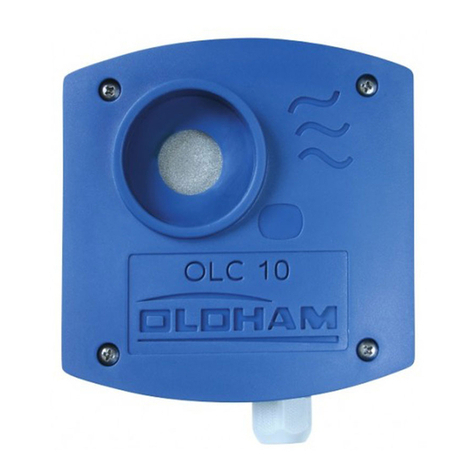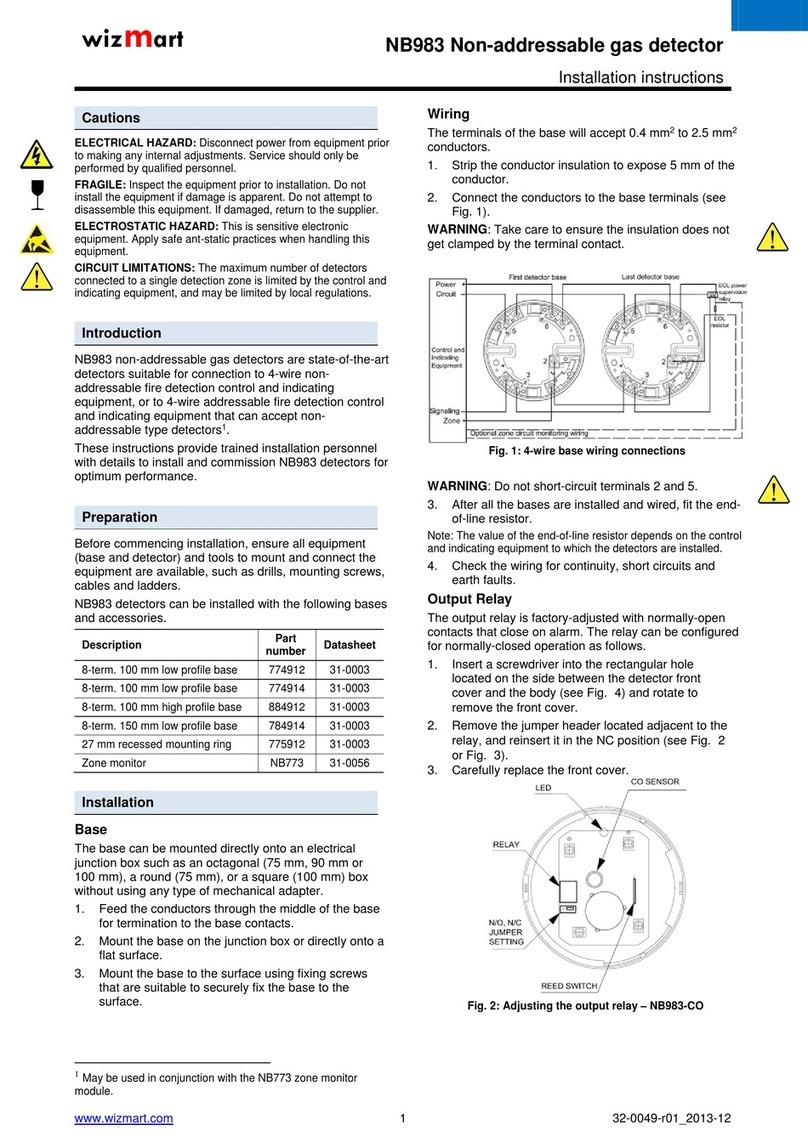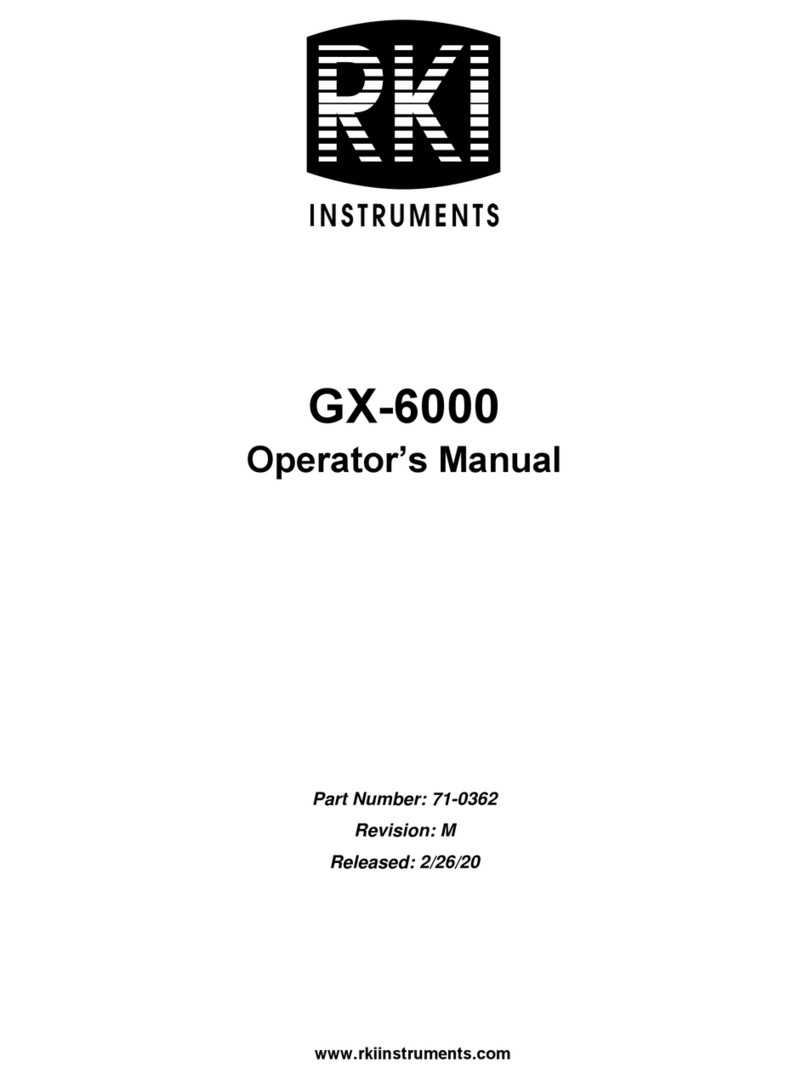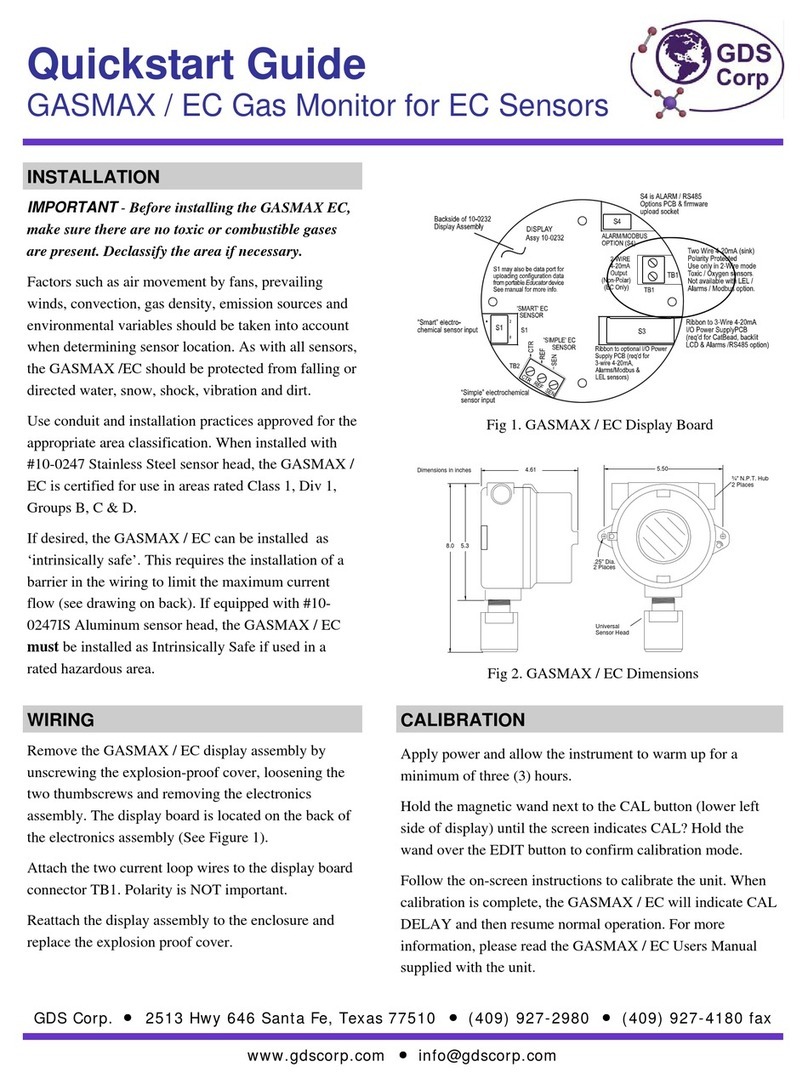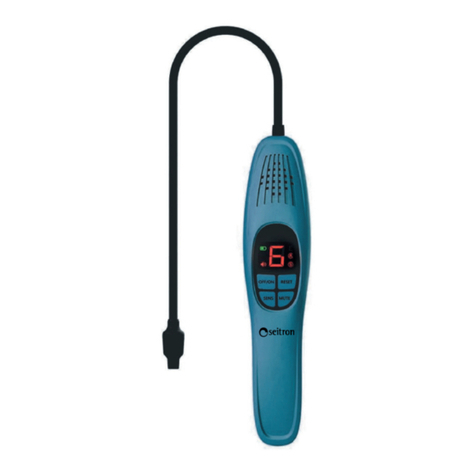
CMS-4 IN-HELMET CARBON MONOXIDE MONITOR Page 2
© 2019 CLEMCO INDUSTRIES CORP. www.clemcoindustries.com Manual No. 29872
Sensor Failure Alarm .............................. 10 ......... 3.4.4
Clock Failure Alarm ................................. 10 ......... 3.4.5
System Failure Alarm .............................. 10 ......... 3.4.6
Alarm Setpoints .......................................... 10 ............ 3.5
MANEUVERING THROUGH MENU MODES 10 .............. 4.0
Measuring Mode ......................................... 10 ........... 4.1
Entering Measuring Mode ....................... 11 ......... 4.1.1
User Mode .................................................. 11 ............ 4.2
Entering User Mode ................................ 11 ......... 4.2.1
Tips for Using User Mode ....................... 11 ......... 4.2.2
Display Mode .............................................. 12 ............ 4.3
Entering Display Mode ............................ 12 ......... 4.3.1
Tips for Using Display Mode ................... 13 ......... 4.3.2
Display Mode Menu Item (Ref. Table) ........ 13 ......... 4.3.4
Displaying the PEAK Screen .................. 14 ......... 4.3.5
Displaying the STEL Screen ................... 14 ......... 4.3.6
Displaying the TWA Screen .................... 14 ......... 4.3.7
Maintenance Mode ..................................... 14 ............ 4.4
Return to Factory Default Settings ........... 14 ......... 4.4.1
Entering Maintenance Mode .................... 15 ......... 4.4.2
Performing a Default (M.DEF) ................. 15 ......... 4.4.3
CALIBRATION, FRESH-AIR ADJUSTMENTS,
BUMP TEST, and STORAGE ................... 15 ........... 5.0
Calibration Schedule ............................. 16 ............ 5.1
Performing Fresh-Air Adjustments ........ 16 ........... 5.2
Fresh-Air Adjustment with Ambient Air .. 16 ......... 5.2.1
Fresh-Air Adj. with 0 PPM CO Test Gas 16 ......... 5.2.2
Prepare Calibration Connector ................ 17 ............ 5.3
Connect Calibration Cup to Monitor ....... 17 ............ 5.4
Remove Calibration Cup from Monitor ... 18 ............ 5.5
Performing a Bump Test ........................ 18 ............ 5.6
Calibrating the CMS-4 ............................ 19 ............ 5.7
Storing the Calibration Kit and Test Gas .. 20 ............ 5.8
MAINTENANCE ......................................... 20 ............ 6.0
Replacing the Lithium Battery ............... 20 ........... 6 . 1
Replacing the Sensor ............................ 21 ........... 6.2
Replacing the Charcoal Filter ................ 22 ........... 6.3
Replacing the Hydrophobic Filter .......... 22 ........... 6.4
TROUBLESHOOTING ............................... 23 ........... 7.0
REPLACEMENT PARTS ............................ 24 ........... 8 . 0
System Replacement Parts .................... 24 ............ 8.1
Monitor Replacement Parts .................... 24 ............ 8 . 2
1.4 Specifications
Target Gas ................. Carbon Monoxide (CO)
Detection Range ...................... 0 to 1000 ppm
Display Increment 0 ‒ 500 .................. 1 ppm
0 ‒ 1000 ................ 5 ppm
CO Sensor ............................ Electrochemical
CO Test Gas ....................................... 25 ppm
Warning Alarm .................................... 10 ppm
Alarm Point, Low ................................. 10 ppm
Alarm Point, High ................................ 10 ppm
1.5 Description of Operation
ARNING
The CMS-4 detects carbon monoxide, which
can be life threatening. When using the CMS-4,
follow the instructions, maintenance,
calibration schedule, and warnings in this
manual to assure proper and safe operation of
the monitor and to minimize the risk of personal
injury. Carbon monoxide poisoning can result
in death or serious injury.
1.5.1 The CMS-4 respirator-mounted carbon
monoxide monitor detects the presence of carbon
monoxide (CO) inside a supplied-air respirator.
1.5.2 CO is displayed in parts per million (ppm). The
current maximum exposure limit in the United States for
carbon monoxide in Grade D compressed breathing air
is 10 parts per million. If CO concentrations reach the
exposure limit, three alarms occur. The audible alarm
alternates between a high and low tone at about once
per second, the LED lights flash twice per second, and
the vibrator pulses twice per second. If an alarm occurs,
remove the respirator as soon as it is safe to do so.
1.5.3 The CMS-4 offers a full range of features,
including:
Digital liquid crystal display (LCD)
Visual, audible, and vibrating alarms that alert the
user to CO concentrations, malfunction, low
battery, and other conditions as noted within this
manual.
Low battery alarm
Sensor fail alarm
Current time display
Up to 4,000 hours of operation from one battery
* Peak is the highest CO concentration since the
monitor was last turned on. Refer to Section 4.3.5
for additional information on the PEAK screen.
* STEL is an acronym for short-term exposure
limit. It is the average reading over the last 15
minutes. Refer to Section 4.3.6 for additional
information on the STEL screen.
* TWA is the time-weighted average over the last
8 hours. Refer to Section 4.3.7 for additional
information on the TWA screen.
* Although some may find PEAK concentrations,
STEL, and TWA information useful, it is not pertinent
for supplied-air respirator use because the maximum
exposure limit for Grade D breathing air is 10 ppm.










